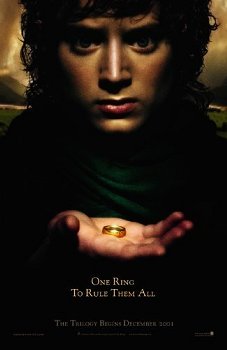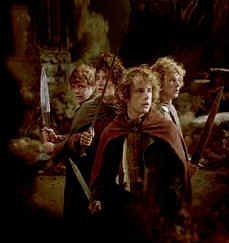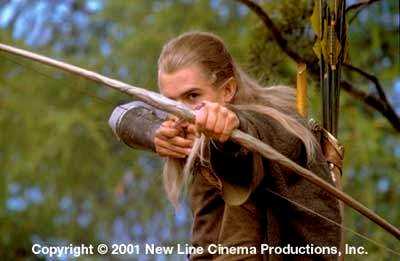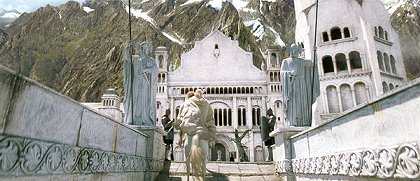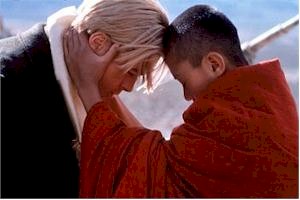Eden Revisited

https://www.frimmin.com/2004/07/05/the-matrix-saga/In film, the exploration of an unreal world is often a vehicle for exploring spiritual truths. This was most famously done by The Matrix Trilogy. However, a year before The Matrix appeared, a delightful fantasy named Pleasantville offered its own insights. Pleasantville is a wonderful story that entertains on more levels than a millionaire’s wedding cake, from being the simple fantasy of modern teens trapped in a 50s sitcom, to a marvelous retelling of the Garden of Eden which might provoke you to look again at the questions you learned to ignore when you first heard them in Sunday School.
Pleasantville tells the story of David, a nerdy high-school student (Tobey Maguire) obsessed with a “gee-whiz” 50’s sitcom called “Pleasantville” (perhaps inspired by Father Knows Best). When David gets into a fight with his sex-obsessed sister Jennifer (Reese Witherspoon), they both soon find themselves transported into the world of Pleasantville by a strange TV repairman (Don Knotts).
Trouble in Paradise
Once in Pleasantville, David and Jennifer find they are living the lives of the main characters, Bud and Mary Sue, complete with their characters’ families, friends, and after-school jobs. Although David is amused by living in his fantasy world, Jennifer is horrified to be trapped in a black-and-white world where no one knows a thing about sex. Not one to live by a script, she seduces her boyfriend, bringing free will and the “knowledge of good and evil,” into Pleasantville. And a rose turns red, bringing color into Pleasantville for the first time.
David is horrified that Jennifer has begun sabotaging this paradise, and warns that she’s “messing with their whole universe.” Jennifer’s answer is “maybe it needs to be messed with.”
And maybe it does. Pleasantville is a stagnant ideal of perfection—the weather forecast is always “high 72, low 72, another beautiful sunny day.” The high school basketball team never loses—in fact, the players never miss a shot. They actually can’t miss, even if they try! Firefighters have nothing to do but save cats, and mothers nothing but to cook, play bridge, and adore their families. But as Rabbi David Cooper writes, “without the potential for perfecting, perfection itself would be imperfect.” Pleasantvillers have no sin, no strife, no worries. There are no achievements because there are no challenges. There is no passion, and no love has ever been tried and proven. There is no “knowledge of good and evil”—all books are blank, all conversations vapid, and all roads lead nowhere.
Since the seed of the “knowledge of good and evil” has been planted, it begins to grow. The changes of growing awareness, of people being stretched beyond the roles of their Pleasantville characters, are shown as color. A girl’s tongue turns pink. A jukebox playing rock and roll has colored lights. A couple falls in love and cease being black and white.

David himself changes Pleasantville, although only accidentally at first, by letting Mr. Johnson, his boss (Jeff Daniels) know that not everything has to be done the same way every time. Soon Johnson dreams of painting, and falls in love with Bud’s mother (Joan Allen). A turning point comes when David stops fighting knowledge, and starts spreading it. When he tells the stories of Huckleberry Finn and The Catcher in the Rye, suddenly the books in the library fill up with words. And as he falls for Margaret (Marley Shelton), he becomes even more dedicated to helping the evolving awareness of the town, and he refuses being sent back by the repairman who wants to prevent further damage to the “reruns.”
But change comes with a price. Whether it’s the basketball team losing, rain and fire threatening the perfect environment, or a marriage collapsing, the changes seem most unpleasant for the many of Pleasantville’s citizens. Negative effects range from heartbreak, to riots, bigotry, and legal persecution.

As Jennifer is somewhat of a serpent figure, introducing temptation, David becomes a Christ figure, fighting the bigotry and violence rising in Pleasantville, and urging the citizens to use their free will for beauty and good.
The Myth of Perfection
There’s a natural human tendency to resist change and long for a perfect place and time. In religion, we see it in the past in Eden, and in the future in Heaven. It’s just being here, now, that we can’t stand. This isn’t just a Christian phenomenon. Gnostics taught that the world is so evil that the Creator had to be a false god, and many in Eastern religions seek enlightenment in order to no longer be born into “conditioned existence”.
The genius of Pleasantville is that it gets us to look at the Eden story closely, and ask some serious questions: Was free will a mistake? Wouldn’t it have been better if Adam hadn’t sinned, and mankind stayed innocent? Wasn’t God ultimately to blame, since he knew everything that would happen?
Until I began studying Christian mystical theology, I, like most Christians, assumed the Fall was a bad thing. Even C.S. Lewis, in his paradise story, Perelandra, seemed to feel a Fall must be averted on the new world by any means possible. But an unprejudiced look at the Genesis story shows God felt otherwise: An omniscient God, knowing full well what would happen—disease, death, despair included—put two curious moral infants, completely ignorant of good and evil, in reach of the tree of knowledge of good and evil and said “don’t touch”. Just for good measure, he made sure the tree would be the central feature of the Garden and it would come complete with a cunning serpent to persuade them to eat the “forbidden” fruit.
We know what happened. and since then, we’re inclined to believe that the world is “lost”, that somehow things “got away” from God. We wonder if free will was a mistake and we mistrust it. We’re conditioned to not recognize that this was the divine plan all along.
The night I joined the Catholic Church, I remembered being surprised by the words of the Exultet, the great Easter Vigil hymn that proclaims:
O happy fault! O necessary sin of Adam,
that gained for us so great a Redeemer!
This idea is called the felix culpa (happy fault), that Adam is to be thanked for his sin bringing the divine light of Christ to the world. In C. S. Lewis’ science-fiction novel, Perelandra, the Fall is averted on that world, but there is a mention that “the greater thing” cannot happen there. Without this fall from pure innocence, there can be no redemption. Recognizing this upholds a radiant faith, that not now, not ever, and absolutely never has God lost nor will he lose control of this world, for even when we work outside his will, we cannot live outside his plan!
The fruit we deal with is not evil, but the knowledge of good and evil. As Pleasantville suggests, an innocent can have no real knowledge of good. The knowledge of good and evil is necessary to be able to choose the good. Otherwise, we are automatons, scripted characters living perfect, scripted lives. There’s a powerful metaphor for awakening here. We need to become conscious, aware of the fact that we are alive, aware of our awesome ability to choose, aware that God lives in us, and that we live, breathe, and have our being in him. Only then can we truly live as Jesus told us to, as cunning as serpents and as harmless as doves (Mt. 10:16).
Want to remember Adam and Eve this year?
St. Adam of Eden, March 10, Catholic;
Sts. Adam and Eve, December 24, Orthodox.Source: The Old Hermit’s Almanac, by Fr. Edward Hays

